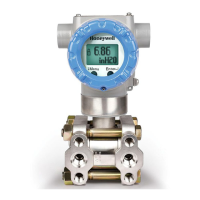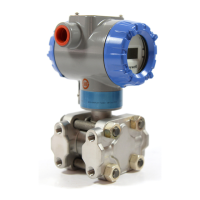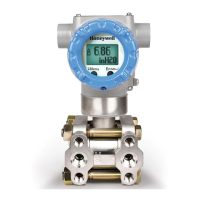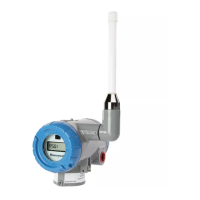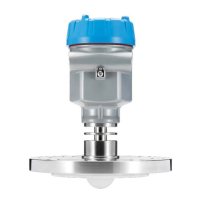17 ST 800 Pressure Transmitter User’s Manual Revision 15
Loop wiring is connected to the transmitter by simply attaching the positive (+) and negative (–) loop
wires to the positive (+) and negative (–) terminals on the transmitter terminal block in the electronics
housing shown in Figure 15.
Figure 15 – Transmitter 3-Screw Terminal Board and Grounding Screw
As shown in Figure 15, each transmitter has an internal terminal to connect it to earth ground. Optionally,
a ground terminal can be added to the outside of the electronics housing. While it is not necessary to
ground the transmitter for proper operation, doing so tends to minimize the possible effects of noise on
the output signal and affords protection against lightning and static discharge. An optional lightning
terminal block can be installed in place of the non-lightning terminal block for transmitters that will be
installed in an area that is highly susceptible to lightning strikes.
Wiring must comply with local codes, regulations and ordinances. Grounding may be
required to meet various approval body certification, for example CE conformity. Refer to
Appendix A of this document for details.
Note: The right-hand terminal is for loop test and not applicable for Fieldbus option.
The transmitter is designed to operate in a two-wire power/current loop with loop resistance and power
supply voltage within the operating range; see Figure 14. With optional lightning protection and/or a
remote meter, the voltage drop for these options must be added to the basic 10.8-volt supply requirements
to determine the required transmitter voltage (V
XMTR
) and maximum loop resistance (R
LOOP MAX
).
Additional consideration is required when selecting intrinsic safety barriers to ensure that they will supply
at least minimum transmitter voltage (V
XMTR MIN
), including the required 250 ohms of resistance (typically
within the barriers) needed for digital communications.
Transmitter loop parameters are as follows:
R
LOOP MAX
= maximum loop resistance (barriers plus wiring) that will allow proper transmitter operation
and is calculated as R
LOOP MAX
= (V
SUPPLY MIN
– V
XMTR MIN
) 21.8 mA.
In this calculation:
V
XMTR MIN
= 10.8 V + V
LP
+ V
SM
V
SM
= 2.3 V, remote meter

